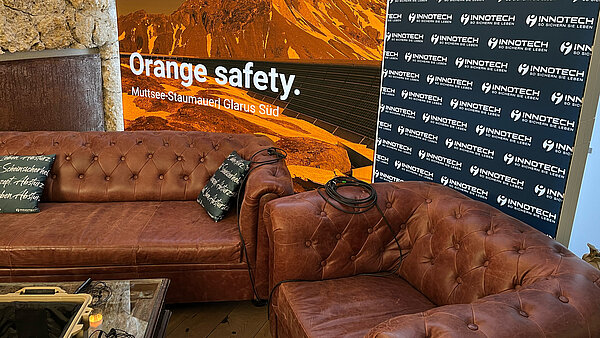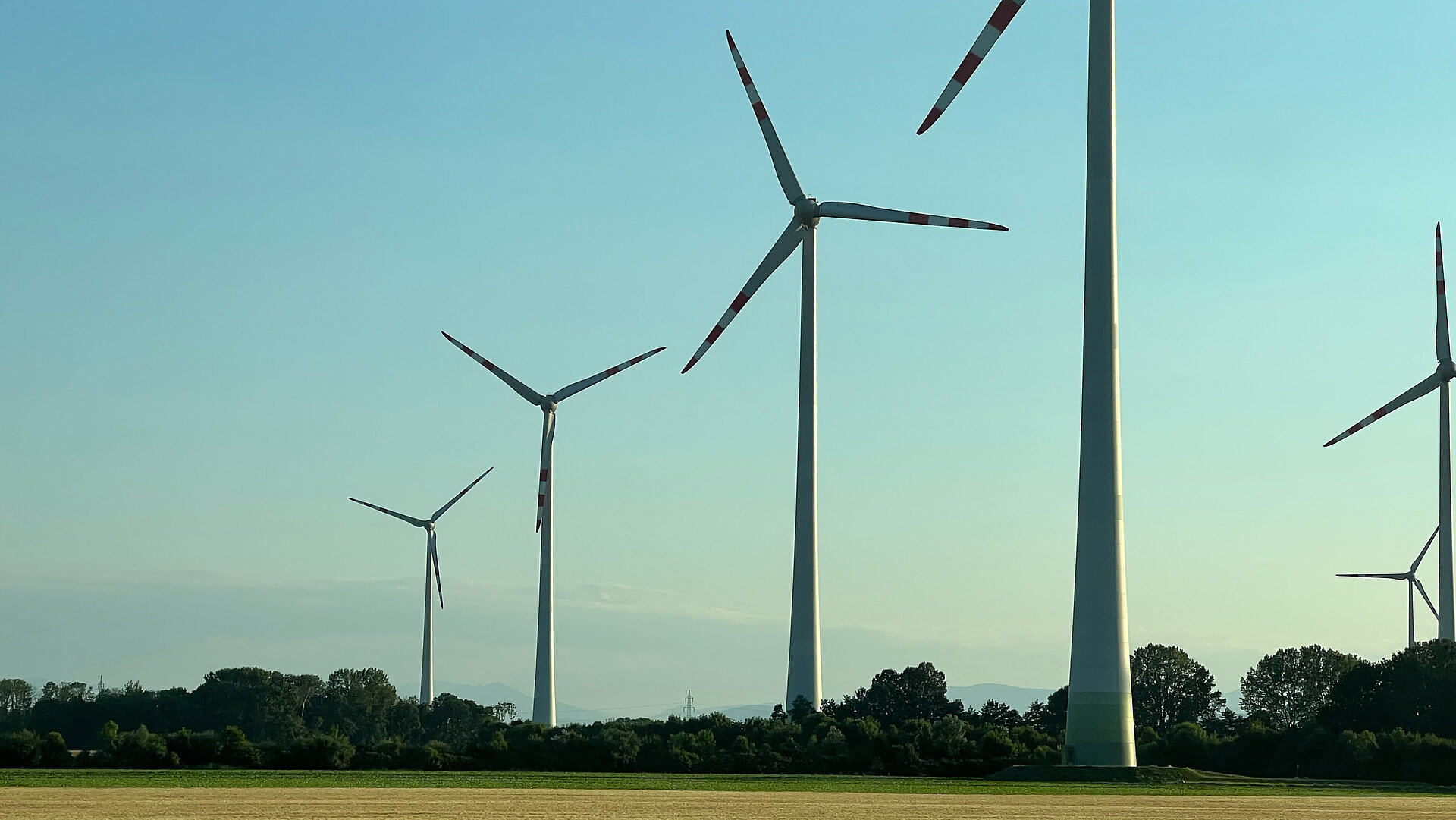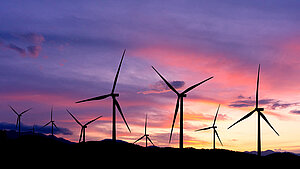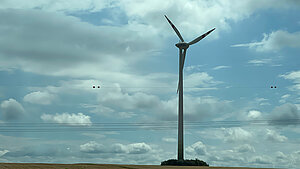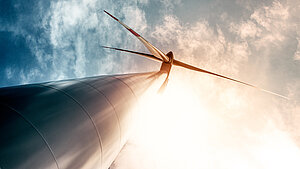Fall protection systems play a key role for service technicians in the field of wind turbines. There is a multitude of risks that need to be defused professionally - not only for maintenance and repair work on the roof of the installation, but also for in any activities within the gondola or on the ascent.
In the INNOtalk on the subject of safety at wind turbines, Marc Wollschläger, Head of Sales at BWTS GmbH, and Michael Pett, Head of Sales at INNOTECH Germany, share their hands-on experience on the subject. They relate that there are commonly 2 to 3 service technicians who work on a wind turbine.
As soon as they start their ascent, they need to know exactly what they are doing. This is because of the vital need to ensure safety: not only for their own ascent to the top but also for the transport of any material and tools they may carry, keeping the equipment from falling and injuring people on the ground.
Most modern installations are outfitted with a service lift. There are also instances, however, where the employees have to climb a ladder to reach the nacelle. Spaced 20 to 25 metres apart along the length of the tower, rest platforms (which must be serviced as well) are installed on the turbine.
As a rule, a service technician first drives or climbs up into the gondola to initiate the transport of the tool from above. This requires that they open the hatch to the freight elevator/tower crane in order to be able to receive the equipment. Naturally, this must not take place unless the technician is properly secured.
In the meantime, the other two co-workers below prepare the tools or materials accordingly and secure them. Once all employees and the equipment have arrived in the gondola at the top, they need to continue on to the installation roof so that they can carry out any work on the rotor blade hub or on the measuring devices of the installation.
It is primarily the exit from the gondola to the roof and the movements on top of the roof - in any weather, even in freezing conditions - that continue to present the service technicians with great challenges. At any moment, there is a risk of slipping, tripping or even falling. It is absolutely imperative in this situation that the technicians can rely on the safety solution 100%.

By loading this video, you accept Google's privacy policy.
Marc Wollschläger and Michael Pett both see room for improvement in the safety systems available today. While all wind turbines are equipped with safety solutions specifically designed for such installations - also in terms of rescue and recovery - detaching and re-attaching are still unavoidable at the present time. Aside from taking considerable time, this process carries significant risk every time.
Wollschläger and Pett wish for a continuous solution in this area, allowing the service technicians to attach themselves once while remaining perfectly secured for all activities in all danger areas.
The differences between onshore and offshore installations
The basic difference between onshore and offshore installations is immediately apparent. The former are located in highly visible locations on the mainland (onshore), while the latter are placed on the high seas so that they can generate wind energy as effectively as possible (offshore).
Aside from these obvious differences, the locations are also distinguished by certain structural and constructional idiosyncrasies. Marc Wollschläger and Michael Pett give a rundown of the most important differences to the panel of experts at the INNO|talk on safety at wind turbines.
- Onshore installations:
Onshore wind turbines are among the most widely used forms of wind energy production. These installations are usually smaller than their offshore counterparts. When it comes to safety, it is particularly important that rescue measures at onshore installations be implemented exclusively in downward direction, as helicopters cannot land on the roof of the facility.
It is therefore crucial for these safety systems to secure all employees and, in an emergency, to also allow for the rescue / recovery of service technicians who fell victim to an accident or suffered an injury.
- Offshore installations:
The slightly larger offshore installations usually have a railing as a fall protection system or a retention device that is installed on the platforms. Due to their remote location at sea, they must also be furnished with a helicopter landing pad on the roof.
At offshore installations, the rescue and recovery of accident victims or injured persons must take place in an upward direction, as the area below offers nothing but rough waters slamming against the tower walls.
This circumstance also makes it a challenge to access the installations at the base. Offshore installations can only be entered from below via a ship. This undertaking, in turn, calls for the presence of appropriate on-board fall arrest systems.
Throughout the installation itself, there are safety devices that resemble those used at onshore installations, but usually carry the added benefit of offering more space for any necessary work. On the flip side, the rescue routes are longer and evacuation is often difficult due to the conditions on site.

By loading this video, you accept Google's privacy policy.
The solution for efficient fall protection in practice
In practice, Marc Wollschläger and Michael Pett often encounter challenges that give them the motivation to look for better solutions. As their contribution to the INNOtalk, they divulge their experience with the TAURUS rail system by INNOTECH, which they consider the perfect fall protection system for wind turbines.
The reason why is very simple: Not only does this solution allow for a seamless connection between the vertical and horizontal passages, but TAURUS can also be precisely adapted to the individual needs of the operators.
Their existing systems, which are installed on many wind turbines, revealed to Pett and Wollschläger time and again that they are neither uniform nor particularly user-friendly - especially at the transitions from horizontal to vertical applications.
This often disqualifies these systems altogether for use under real-world conditions. Not so with TAURUS system, as its highly malleable rails can be twisted as needed, making the above problems a thing of the past.
The employees attach themselves to the fall protection system once and can afterwards cover all paths at the installation with absolute safety and without having to waste even one thought on the next anchor points. They can thus concentrate 100% on the work and rest assured that they are well secured at all times.
Michael Pett illustrates his point with an offshore installation in the North Sea:
Here, too, the operators were faced with the difficult task of finding a fall protection system that works flawlessly both in horizontal and vertical direction. Sadly, the system in place at the time did not meet these requirements. It was bulky and frequently shunned by the employees. After pondering this situation for a while, Pett eventually came across INNOTECH and their rail runner system TAURUS.
As an added benefit, the system also made it possible to carry out the installation of the fall protection system in such a way that the structure of the installation remained unaffected. The service technicians and employees working on and with the installation became excited even before the installation of the system was finished, recalls Pett. And, they stayed excited thanks to the exceptional ease of use.

By loading this video, you accept Google's privacy policy.
The significance of PPE
What would fall protection or individual protection amount to without suitable PPE (Personal Protective Equipment)? PPE must satisfy the requirements of the users. Only if it is optimally tailored to their needs can it deliver maximum safety and the highest wearing comfort. When trying to find the best solution, Pett and Wollschläger do not merely focus on the minimum requirements, but go one step further.
They attach particular importance to tailor-made solutions in this area as well. Naturally, a maximum degree of user-friendliness must be achieved to ensure that the PPE is actually utilized. Thanks to a strategic partnership they entered into with an Austrian PPE manufacturer, INNOTECH is in a position to offer innovative solutions in this regard and continuously develop them further.
This close cooperation allows the Upper Austrian specialist for fall protection to cater to individual requirements - even in connection with PPE - and, consequently, make the workflows substantially safer. The feedback given by service technicians is always collected as a valuable resource.

By loading this video, you accept Google's privacy policy.











